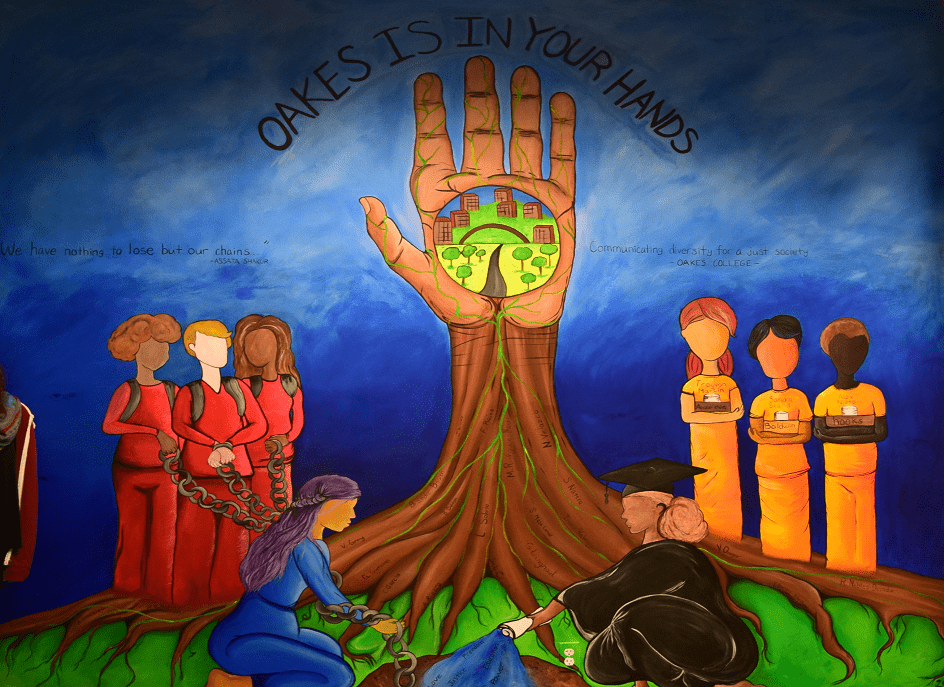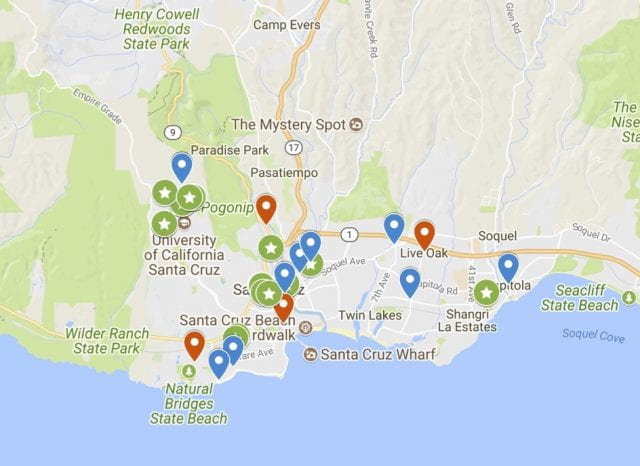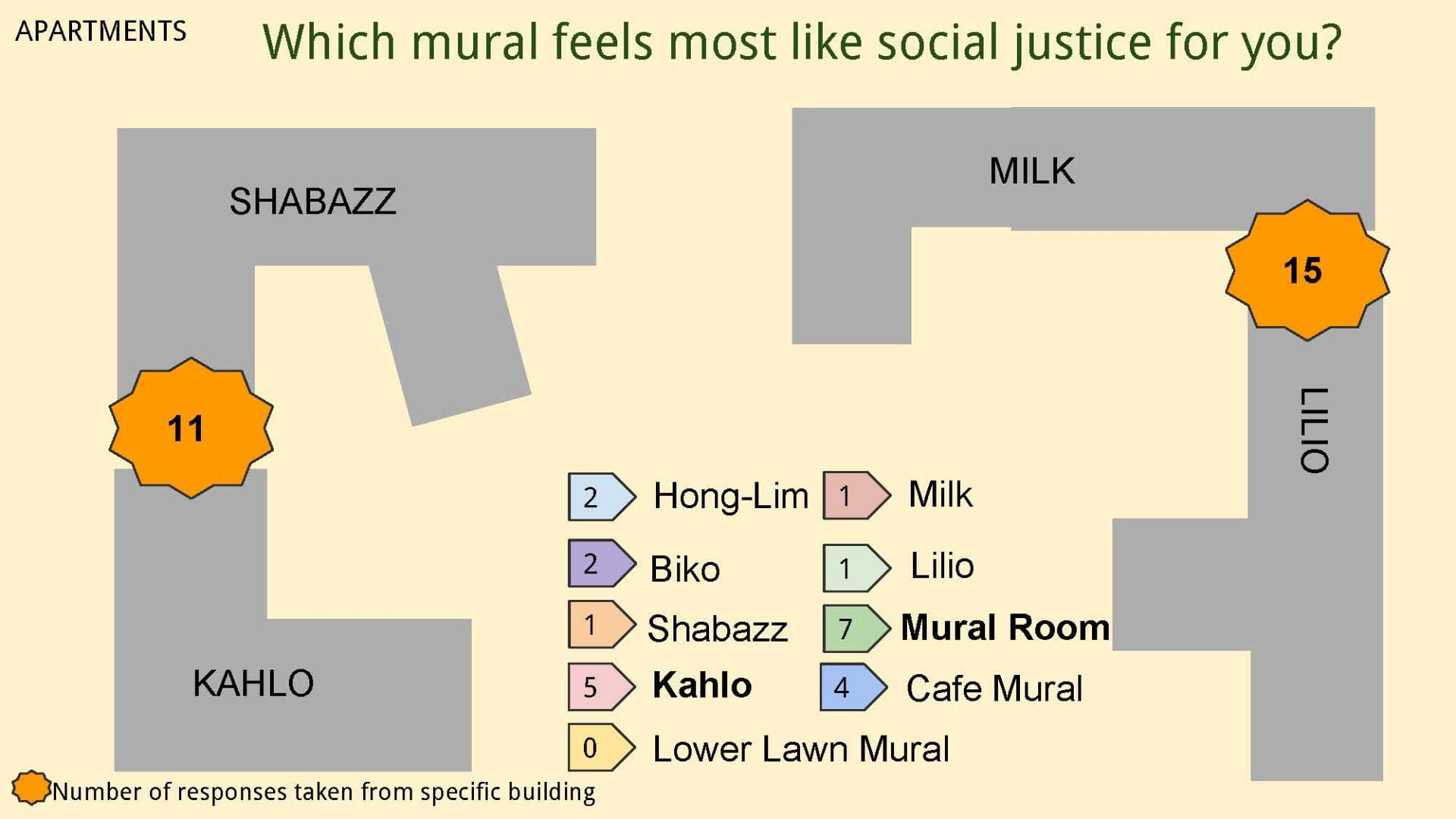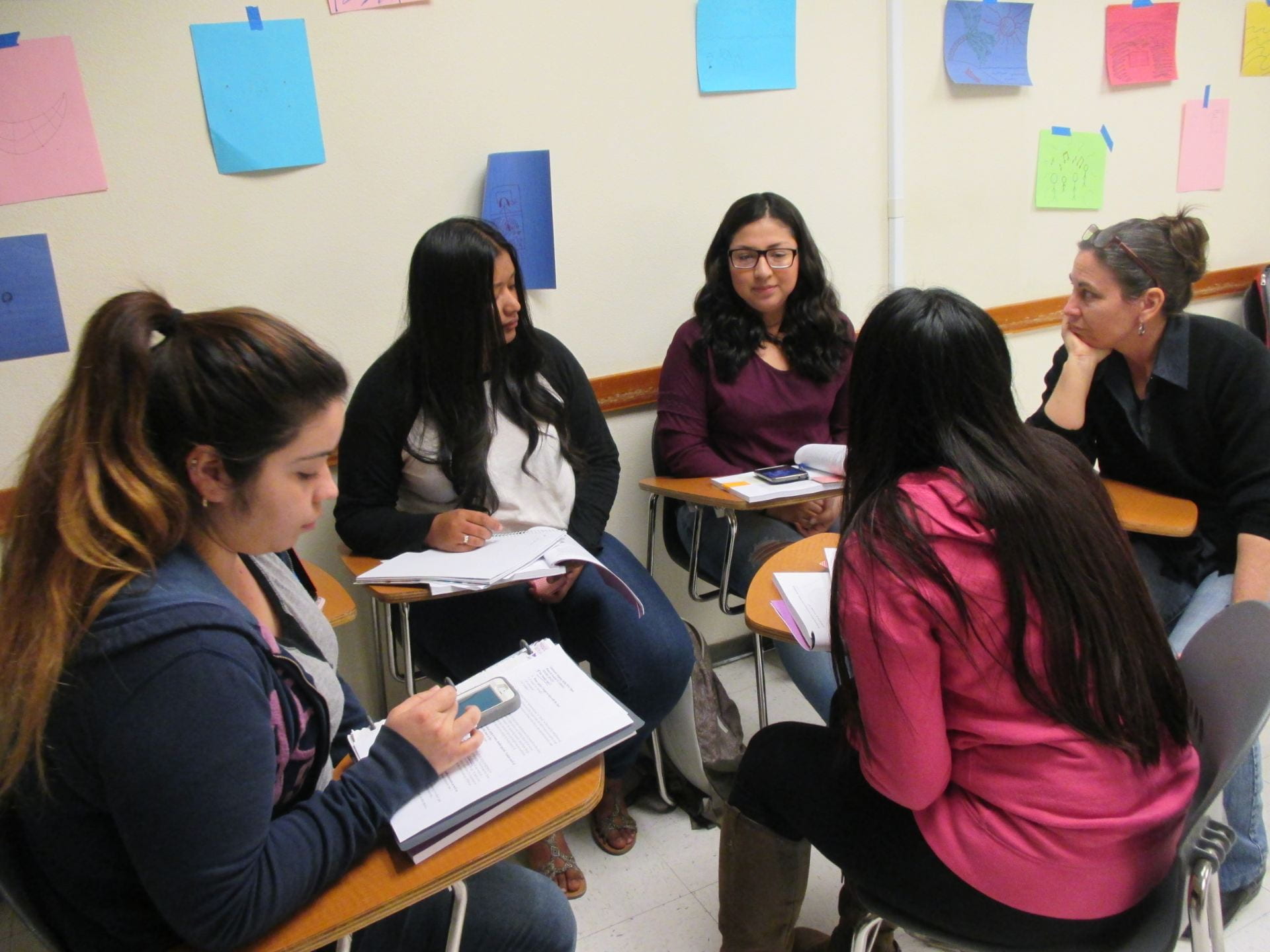Home » Community Mapping

Research teams work in the classroom
and in the field.

Students re-launched the Oakes mural tradition and claimed study space for Oakes students in the Library through three years of research, artistry, & organizing (2015-2017)

“Assets & Allies for student tenant rights” (Community Mapping 2018)
Community Mapping
Oakes 153, “Community Mapping,” is a social research course
that introduces students to principles and practices of participatory research and qualitative research methods–observation, individual interview, and focus groups. And, of course, students learn about community mapping techniques, as well as the issues they are researching.
This 5-unit PR-S course is offered each Winter, and may be used to satisfy an upper division course requirement for Community Studies and Sociology.
What is “Community Mapping?”
Community mapping techniques are used around the world in a variety of settings, to help engage people in participatory research and analysis of their own circumstances so they can be better equipped to change them. Techniques and process-steps vary widely within these toolkits, but they all emphasize working together to understand how commonly shared space, resources, or conditions are experienced differently, according to people’s different positions and perspectives. This approach is optimistic in its premise that with better ways of sharing information and doing research about our lives, we will become more empathetic, insightful, energized, and skilled in problem-solving for justice. These toolkits are therefore helpful in situations where community development is needed.
Read more, below: decolonize knowledge & build community

Currently, 153 is working with “We Belong: Collaboration for Community-Engaged Research and Immigrant Justice.”
The We Belong Project is a collaborative effort among the CISER Project of the Center for Labor Studies in Sociology, Community Mapping of the Oakes CARA Program, the Thriving Immigrants Collaborative of Santa Cruz County, and many other organizations and contributors who are committed to research and community discussion for justice in our region. Read more about We Belong.
Taking Oakes 153, Community Mapping, has allowed me to be immersed into the issues that are affecting many mixed-status families that are living in Santa Cruz. As an immigrant, I share similar stories with other immigrant families that I have interviewed throughout the course. This class, in particular, served as a method to really observe our surroundings and the community that we share with other students, staff, and professors.
—153 Participant, 2019
…more about mapping to
decolonize knowledge & build community
Decolonizing knowledge production. Sometimes these approaches are known as “Asset-mapping,” or “Asset-Based Community Development” (Kretzmann & McKnight, 1993; Mathie & Cunningham, 2003), but the techniques were widely used in the Global South for decades as part of a decolonizing approach to culture before they were published in the North under these names. Most community mapping projects involve visual or multimodal techniques to help participants communicate their perspectives during research and to facilitate sharing the results of research afterward as well.
These techniques can work to decolonize relations of knowledge and power, as community members re-make and re-name the depictions of their world according to what they already know, what they envision, and what they discover through their research.
One of the ways communities take stock of their circumstances is by studying or producing “actual maps.” However, as Delgado and Delgado (2013) explain, most maps made or used during these projects are far from finished products. Maps and map-making are communication and research tools, and can be made by anyone as a way to convey their truth.
Check out the Oakes 153 Archive…
When the course launched in 2015, as “Community Mapping: Power and the People of Oakes College,” the course-project was new and our geography (or mapping “transect”) was small. The proposal was to discover more about how students, staff, and faculty identified sources of strength and barriers to their goals–and thus to serve as a more deeply reflective and inclusive space for defining future development projects within the Oakes community. Year by year, research gradually spiraled outward in scope, building on findings and issues identified by previous students.

sample survey results from “Representation & Participation,” by Irene Valencia, Nazareth Velazco, and Fernanda Madrigal, Spring 2016.
Mapping the power, the assets, and the needs of the Oakes community has shown me that community mapping goes far beyond mapping spaces and resources and distributing the information. Rather, community mapping is about purposeful analysis of assets and issues and finding ways to create a greater collective power and begin healing any wounds or issues that prevent us from achieving that.
Being political in your community mapping requires you to invest in the personal accounts of community members; it requires you to be mindful of the historical and sociological context of those community members; it requires a genuine passion and love for achieving justice and progress in the community.
–Brandie Bowen,
153 Participant, 2015

